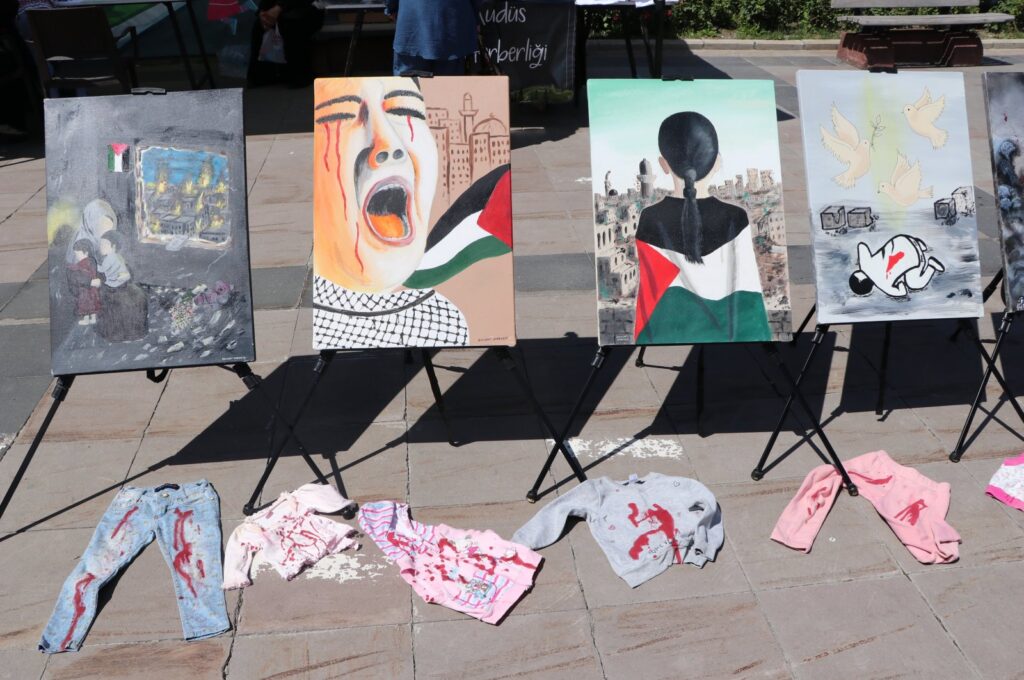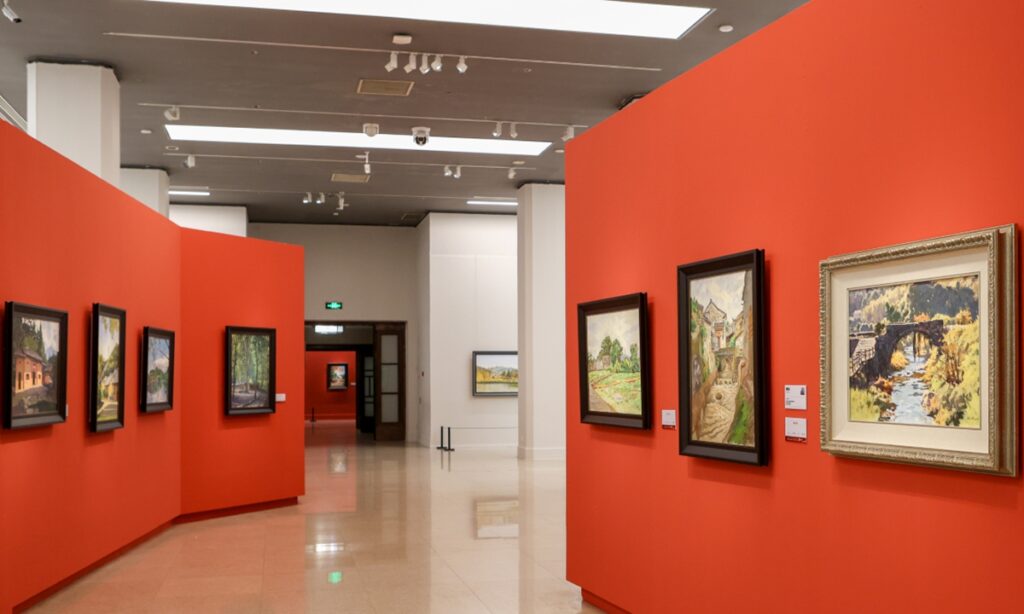
Monitoring Desk
DUBAI: Cairo’s Ubuntu Gallery annual summer exhibition is an event on every art lover in the city’s calendar. Here, we highlight a few of the works on show.
‘Untitled’
Mostafa’s work has evolved from painting to include storyboard and digital art. She is heavily influenced by the vivid colors of pop art, but also by her personal surroundings and domestic life, according to the gallery.
This untitled piece is taken from her “Merry Go Round” project. When her solo exhibition launched in March this year, Mostafa explained that the show focused “on the contrast between what the carousel metaphorically implies and its unattainable cheerful exterior in a world that merges human and animalistic facial expressions that cannot (differentiate between) what is real and what is masked.
“The paintings maneuver through a lively, colorful, yet still world,” she continued. “A world of cheerful environments surrounded by unlikely faces.”
She also explained the lack of perspective in the paintings, saying: “In ‘Merry Go Round,’ all objects lie on the same plane of clarity and vitality. No space is given to identify what is near and what’s far away.”
‘Man With Jasmine’ (sketch)
Zaki is one of Egypt’s most-respected sculptors. This sketch is for his marble sculpture “Man With Jasmine,” which was the highlight of Zaki’s 2021 exhibition “Resurrection — Among That People,” inspired by the Egyptian revolution.
Zaki’s wide-ranging influences run from the celebrated ancient Egyptian statues of Cairo and Luxor through Italian renaissance sculpture (Zaki spent almost a decade in Tuscany in the Eighties and Nineties) to Egyptian modernism. He has managed to combine the centuries-old with the up-to-date to create a style all his own — a style that has attracted international acclaim, with museums and private collectors from across the world acquiring his works.
‘Untitled’
This hazy landscape painting is typical of the Sudanese artist’s work, which — the gallery says — “invite the viewer to stare, to attempt to experience a moment of serenity.” It is part of his “CMYK” series, based on the subtractive color model used in printing, a model that Elemam used “allegorically, in his quest to invite the viewer to reexamine a painting from first principles,” according to London’s Saatchi Gallery.
“His prime concern as an artist and responsibility towards the onlooker is the essence of what a painting really is; what you feel is what you see,” Saatchi continues. “Colors are very important to Elemam, he has turned them into a language of his own and he uses them to tell you what he thinks and how he feels, yet unobtrusively gives you all the space and freedom to draw out your own conclusions.”
‘Untitled’
Much of the Cairo native’s work features the kind of warped, otherworldly creatures seen in this piece. They are inspired by Fakher’s love of nature, and directly reference tree trunks. “Fakher’s work can also be identified by her distinctive choice of colors, where she adds an abrupt contrast between the foreground and background so as to highlight and present her subjects vividly,” Ubuntu explains. “At the same time, she manages to contain an extensive amount of detail, allowing the viewer to truly savor in the rawness behind her aesthetic.”
‘Untitled’
Aly’s love of art history and heritage led him to a career in teaching. It also pervades his own artwork, which is heavily influenced by Egyptian mural art. “These murals told stories of daily life, and the rituals of man’s relationship to agriculture and the earth,” the gallery explains. “Aly’s works are densely populated vignettes of Egyptian country landscapes, or else human and animal figures painted in a flat style reminiscent of Ancient Egyptian and Assyrian wall and temple murals. No doubt the artist is celebrating Egyptian identity, but there is another message in the composition, both political and nationalistic, about Egypt’s people. His drawings and paintings are an ode to them, highlighting a history that extends back thousands of years.”
‘Untitled’
This piece appeared in Abdel Nadi’s “Licorice” exhibition. “Abdel Nabi is interested in how art gives form to the communal, the political, the personal and the universal,” the gallery states. Writing in 2020, artist and filmmaker Khaled Hafez compared Abdel Nadi’s work to “the early artists who left their prints on prehistoric stones” and said she uses “a visual language that is both personal and intimate.” But he also described her art as “cinematic,” saying it is “where dreams mingle with reality.”
The post Regional artists unite at Cairo’s Ubuntu Gallery annual summer exhibition appeared first on The Frontier Post.








